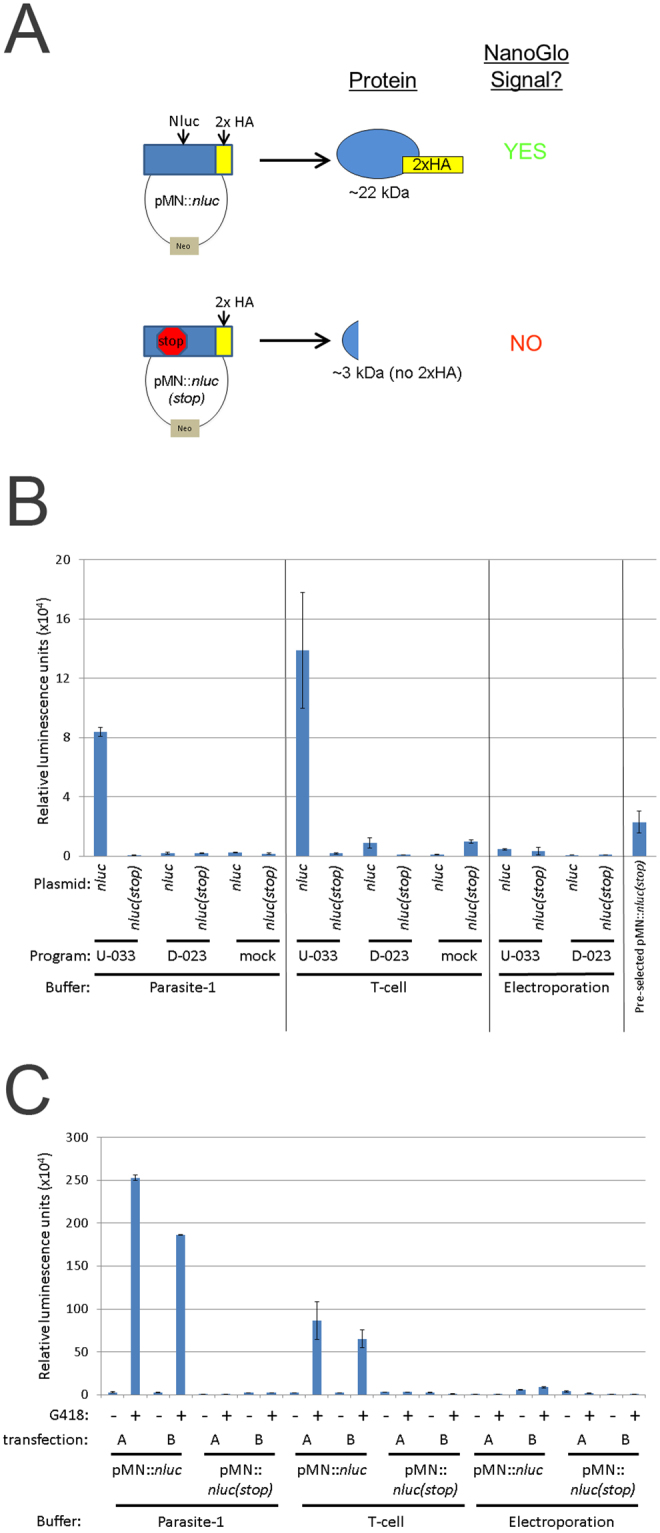Figure 2.

Parameters for transfection of Trichomonas vaginalis for detection of nanoluciferase activity. (A) Cartoon representation of nanoluciferase plasmids and predicted outcome for protein production. (B) A total of 1 × 107 parasites were either nucleofected using the U-033 (“U”) or D-023 (“D”) programs (Amaxa) or mock (no nucleofection) with 10 μg of pMN::nluc or pMN::nluc(stop) in buffers Parasite-1 or T-cell (Lonza) or electroporated (975 μF, 350 V, Bio-Rad) in completed TYM media. Plasmids are pMN::nluc, denoted as “nluc” and pMN::nluc(stop), denoted as “nluc(stop)” where indicated. Parasites were immediately recovered in completed TYM media. After 24 hours, a total of 1 × 106 parasites were collected and nanoluciferase activity was measured by NanoGlo assay (Promega). Graph represents the average relative luminescence value +/− standard deviation of two transfections per condition. (C) Samples transfected with the pMN::nluc or pMN::nluc(stop) constructs and the U-033 program from Fig. 2B were subjected to G418-selection and allowed to grow for an additional +24 hours (+48 hours total, post-transfection). Equivalent numbers of parasites (1 × 106) were assayed for nanoluciferase activity and the graph represents the average relative luminescence value +/− standard deviation of two attempts per condition.
